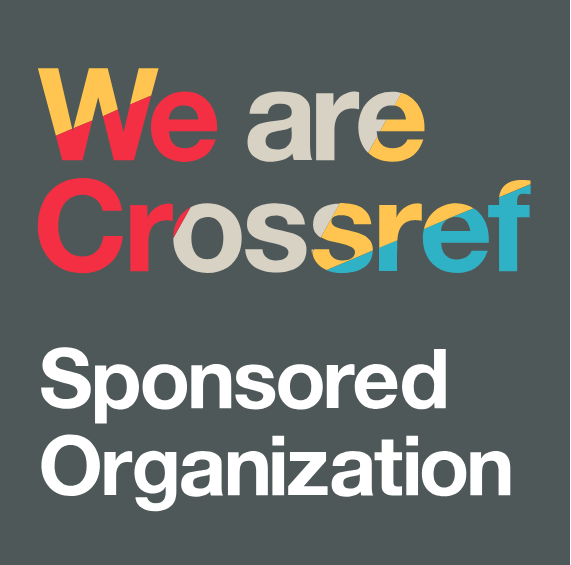The Influence of e-WOM, Brand Image and Bandwagon Effect on Decisions to Purchase Korean Street Food Family Mart Products
DOI:
https://doi.org/10.38035/jafm.v5i4.746Keywords:
E-WOM;, Brand Image;, Bandwagon Effect;, Purchase DecisionAbstract
This research aims to determine the influence of the variables E-WOM, Brand Image, and Bandwagon Effect on purchasing decision variables for Korean Street Food FamilyMart products. The analysis and testing method used in this research is multiple linear regression analysis. The data used in this research is primary data collected through questionnaires distributed to 114 respondents who are the sample for this research whose criteria are STIAMI students who have purchased Korean Street Food FamilyMart products. The assessment scale in the questionnaire uses a Likert scale with a score range of 1 to 5. Data processing is assisted by the Stata application version 17. The results of this research are: 1). E-WOM does not have a positive and significant effect on purchasing decisions for Korean Street Food products at FamilyMart, 2). Brand Image does not have a positive and significant effect on the decision to purchase Korean Street Food products at FamilyMart, 3) the bandwagon effect has a positive and significant effect on the decision to purchase Korean Street Food products at FamilyMart.
References
Aaker, DA (nd). Managing Brand Equity.
Adjei, M.T., Noble, S.M., & Noble, C.H. (2010). The influence of C2C communications in online brand communities on customer purchase behavior. Journal of the Academy of Marketing Science, 38(5), 634–653. https://doi.org/10.1007/s11747-009-0178-5
Alif Fianto, AY, Hadiwidjojo, D., Aisjah, S., & Solimun, S. (2014). The Influence of Brand Image on Purchase Behavior Through Brand Trust. Business Management and Strategy, 5(2), 58. https://doi.org/10.5296/bms.v5i2.6003
Bambauer-Sachse, S., & Mangold, S. (2011). Brand equity dilution through negative online word-of-mouth communication. Journal of Retailing and Consumer Services, 18(1), 38–45. https://doi.org/10.1016/j.jretconser.2010.09.003
Bass, FA, €'essemier, EA, & Lehmann3, BR (nd). AN EXPERIMENTAL STUDY OF RELATIONSHIPS BETWEEN ATTITUDES, BRAND PREFERENCE, AND CHOICE' This paper examines the effectiveness of models of preference and choice based on specific product attributes. An experiment with soft drink brands produced data that reflects preference rankings, choice, and evaluation of specific attributes at different points in time. Deterministic and stochastic choice models are examined.
Baumeister, R.F., & Leary, M.R. (1995). The Need to Belong: Desire for Interpersonal Attachments as a Fundamental Human Motivation. In Psychological Bulletin (Vol. 117, Issue 3).
Bearden, W. O., & Etzel, M. J. (1982). Reference Group Influence on Product and Brand Purchase Decisions. Journal of Consumer Research, 9(2), 183. https://doi.org/10.1086/208911
Cheung, C. M. K., & Thadani, D. R. (2012). The impact of electronic word-of-mouth communication: A literature analysis and integrative model. Decision Support Systems, 54(1), 461–470. https://doi.org/10.1016/j.dss.2012.06.008
Dichter, E. (nd). Commentary What's In An Image.
Gruen, T. W., Osmonbekov, T., & Czaplewski, A. J. (2006). eWOM: The impact of customer-to-customer online know-how exchange on customer value and loyalty. Journal of Business Research, 59(4), 449–456. https://doi.org/10.1016/j.jbusres.2005.10.004
Jaini, A., Quoquab, F., Mohammad, J., & Hussin, N. (2020). “I buy green products, do you…?”: The moderating effect of eWOM on green purchase behavior in Malaysian cosmetics industry. International Journal of Pharmaceutical and Healthcare Marketing, 14(1), 89–112. https://doi.org/10.1108/IJPHM-02-2019-0017
Kastanakis, M. N., & Balabanis, G. (2012). Between the mass and the class: Antecedents of the “bandwagon” luxury consumption behavior. Journal of Business Research, 65(10), 1399–1407. https://doi.org/10.1016/j.jbusres.2011.10.005
Kastanakis, M. N., & Balabanis, G. (2014). Explaining variation in conspicuous luxury consumption: An individual differences' perspective. Journal of Business Research, 67(10), 2147–2154. https://doi.org/10.1016/j.jbusres.2014.04.024
Keller, K. L. (1993). Conceptualizing, measuring, managing. Journal of Marketing, 57, 1–22.
Low, G.S., & Lamb, C.W. (2000). The measurement and dimensionality of brand associations. Journal of Product & Brand Management, 9(6), 350–370. https://doi.org/10.1108/10610420010356966
Martínez, E., & De Chernatony, L. (2004). The effect of brand extension strategies upon brand image. Journal of Consumer Marketing, 21(1), 39–50. https://doi.org/10.1108/07363760410513950
Michelle, M., Byhaqi, R., Karyatun, S., & Digdowiseiso, K. (2023). THE INFLUENCE OF BRAND IMAGE, PRICE, AND PROMOTION ON THE PURCHASE DECISION OF WHITE KOFFIE CIVET COFFEE IN THE SOUTH JAKARTA AREA. In Syntax Admiration (Vol. 4, Issue 5).
Mohammad, J., Quoquab, F., & Mohamed Sadom, N.Z. (2020). Mindful consumption of second-hand clothing: the role of eWOM, attitude and consumer engagement. Journal of Fashion Marketing and Management, 25(3), 482–510. https://doi.org/10.1108/JFMM-05-2020-0080
Philip Kotler, K.L.K. (2016). Marketing Management 12th edition Volumes 1 & 2. PT. Index.
Plumeyer, A., Kottemann, P., Böger, D., & Decker, R. (2019). Measuring brand image: a systematic review, practical guidance, and future research directions. Review of Managerial Science, 13(2), 227–265. https://doi.org/10.1007/s11846-017-0251-2
Putra, IGBS, & Abiyoga, NLA (2023). The Influence of Brand Image, Product Quality, Price and Life Style on Purchasing Decisions. Journal of Management, Entrepreneurship and Tourism, 3(2), 343–351.
Rodrigues, A., Godwin, B. J., & George, J. P. (2023). Brand anthropomorphism's impact on real estate purchase decisions of young buyers in India and the underlying reliance on spatial memory. International Journal of Housing Markets and Analysis. https://doi.org/10.1108/IJHMA-12-2022-0178
Sen, S., & Lerman, D. (2007). Why are you telling me this? An examination into negative consumer reviews on the web. Journal of Interactive Marketing, 21(4), 76–94. https://doi.org/10.1002/dir.20090
Shaikh, S., Malik, A., Akram, M.S., & Chakrabarti, R. (2017). Do luxury brands successfully engage consumers? The role of bandwagon effect. International Marketing Review, 34(4), 498–513. https://doi.org/10.1108/IMR-09-2014-0302
Shang, S. S. C., Wu, Y. L., & Sie, Y. J. (2017). Generating consumer resonance for purchase intention on social network sites. Computers in Human Behavior, 69, 18–28. https://doi.org/10.1016/j.chb.2016.12.014
Tynan, C., McKechnie, S., & Chhuon, C. (2010). Co-creating value for luxury brands. Journal of Business Research, 63(11), 1156–1163. https://doi.org/10.1016/j.jbusres.2009.10.012
Vahdati, H., & Nejad, SHM (2016). Brand personality toward customer purchase intention: The intermediate role of electronic word-of-mouth and brand equity. Asian Academy of Management Journal, 21(2), 1–26. https://doi.org/10.21315/aamj2016.21.2.1
Yudistira, A. (2022). The Influence of the Bandwagon Effect, Vablen Effect, on Purchasing Decisions during the Pandemic. 1–17.
Downloads
Published
How to Cite
Issue
Section
License
Copyright (c) 2024 Ahmad Hidayat, Tuswoyo Tuswoyo, Ade Arqam Hidayat

This work is licensed under a Creative Commons Attribution 4.0 International License.
Authors who publish their manuscripts in this journal agree to the following conditions:
- The copyright on each article belongs to the author(s).
- The author acknowledges that the Journal of Accounting and Finance Management (JAFM) has the right to be the first to publish with a Creative Commons Attribution 4.0 International license (Attribution 4.0 International (CC BY 4.0).
- Authors can submit articles separately, arrange for the non-exclusive distribution of manuscripts that have been published in this journal into other versions (e.g., sent to the author's institutional repository, publication into books, etc.), by acknowledging that the manuscript has been published for the first time in the Journal of Accounting and Finance Management (JAFM).
























